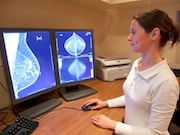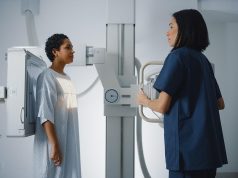New suspicious lesions detected on breast MRI during neoadjuvant therapy are more likely benign
TUESDAY, May 7, 2019 (HealthDay News) — For patients undergoing neoadjuvant chemotherapy for locally advanced breast cancer, magnetic resonance imaging (MRI) examinations with new suspicious findings are unlikely to represent a new site of malignancy, according to a study presented at the annual meeting of the American Roentgen Ray Society, held from May 5 to 10 in Honolulu.
Donna Eckstein, M.D., from the University of California in San Francisco, and colleagues identified all breast MRI examinations performed to assess response to neoadjuvant chemotherapy from 2000 to 2018. Study cases classified as Breast Imaging Reporting and Data System (BI-RADS) 4 or 5 were identified. All cases with new suspicious lesions found after initiation of neoadjuvant treatment were included; 28 MRI examinations were included.
The researchers found that all study cases were identified as BI-RADS 4. Sixteen lesions were contralateral to known malignancy, while 11 and one were ipsilateral and bilateral, respectively. Lesions included mass, nonmass enhancement, and focus (18, eight, and two, respectively). Twenty-five of the cases had tissue diagnosis or sufficient imaging follow-up to establish diagnosis; the outcomes were unknown in three cases. In cases with known outcomes, none of the new suspicious findings were malignant, while 11, five, and nine were proven benign at percutaneous biopsy, proven benign at surgical pathology, and presumed benign after resolution of the suspicious lesions or stability over more than two years, respectively.
“Our findings suggest that new suspicious findings on MRI arising during neoadjuvant therapy are almost certainly benign, although larger studies across facilities are needed to confirm whether biopsy may be safely averted in these scenarios,” the authors write.
Copyright © 2019 HealthDay. All rights reserved.








